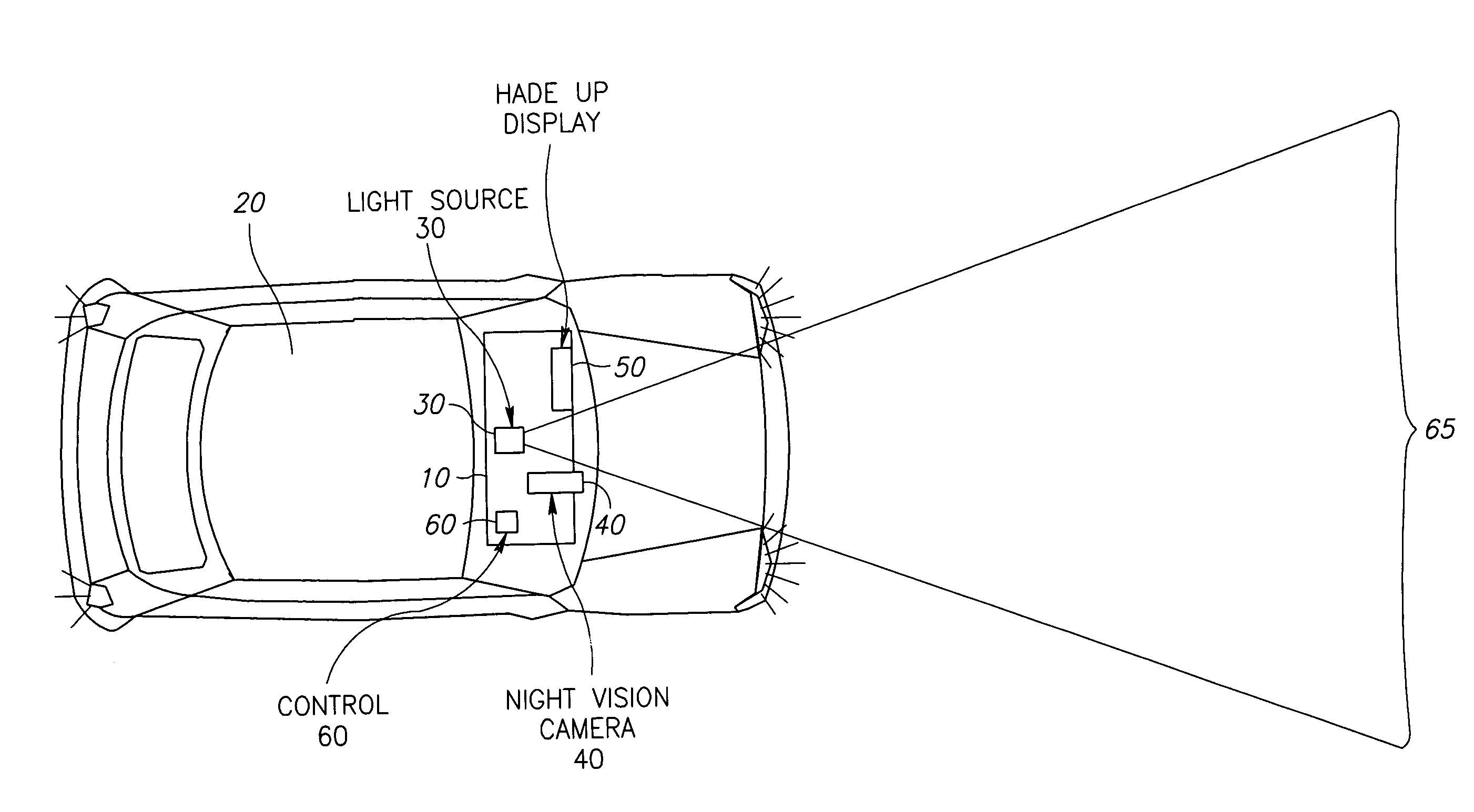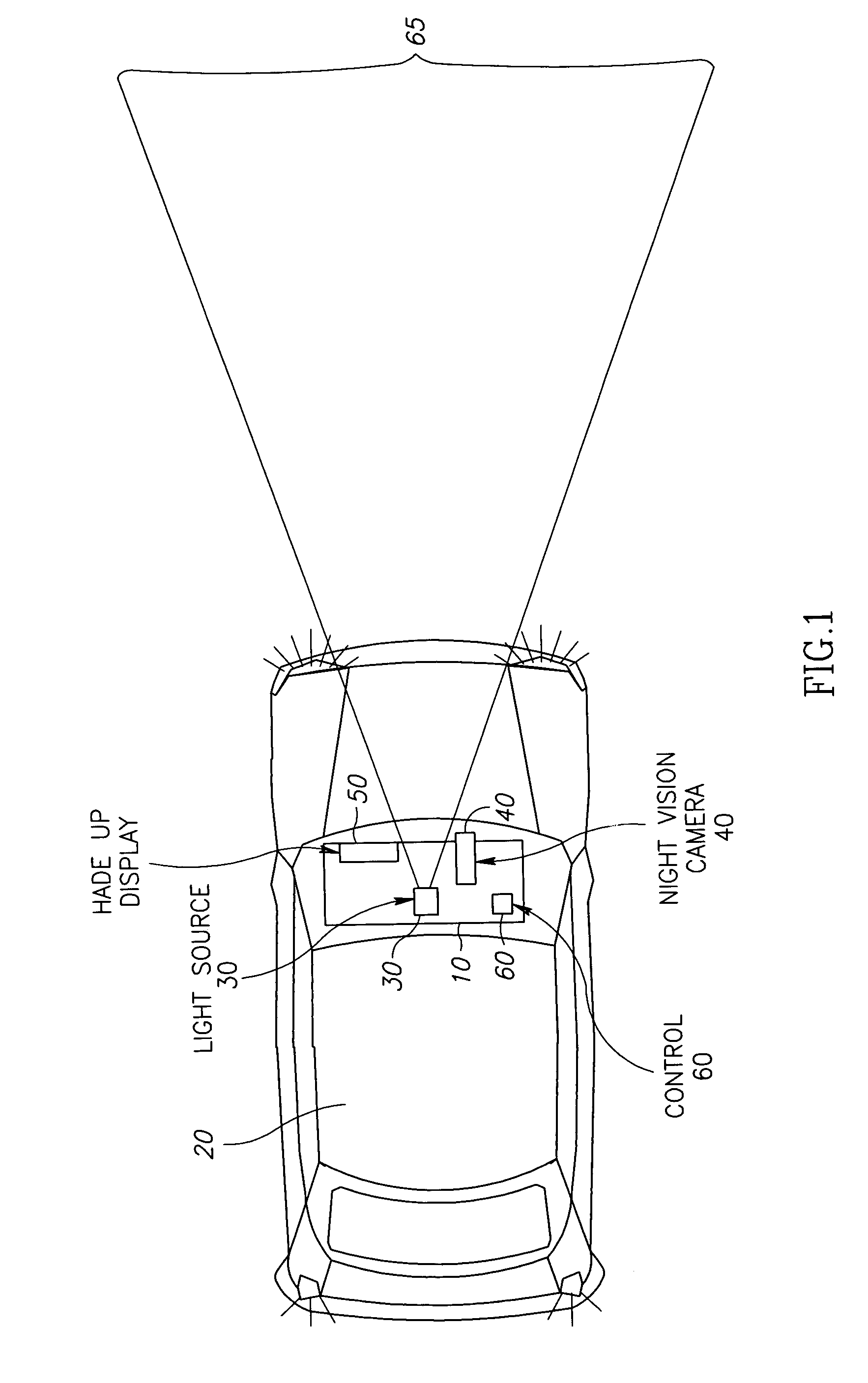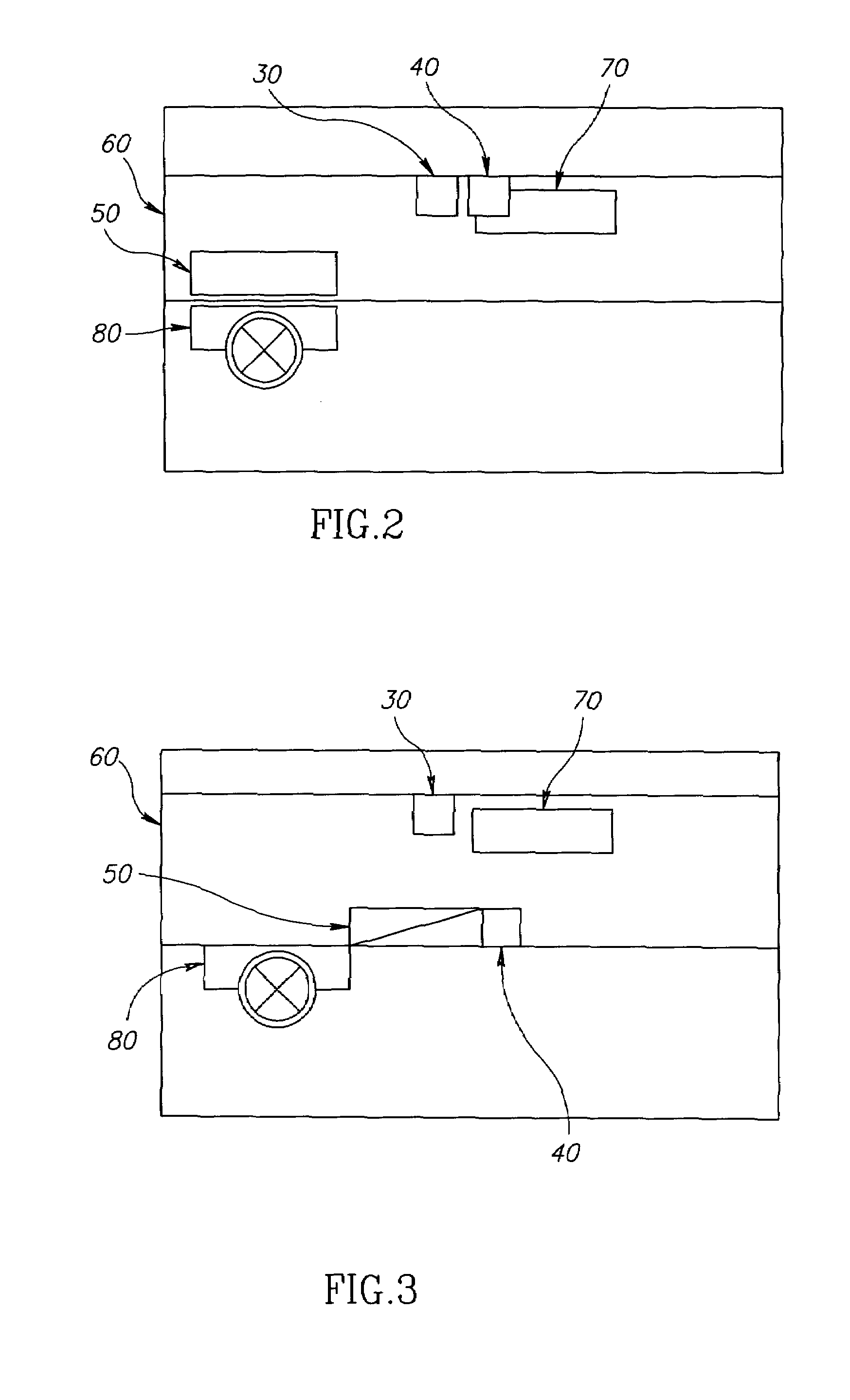Vehicle mounted night vision imaging system and method
a technology of night vision imaging and display system, which is applied in the direction of distance measurement, instruments, polarising elements, etc., can solve the problems of limiting the visibility range of the driver, the use of high beam lights or alternative high-powered lights is not customary nor allowed, and the driver is glaring at other drivers
- Summary
- Abstract
- Description
- Claims
- Application Information
AI Technical Summary
Benefits of technology
Problems solved by technology
Method used
Image
Examples
Embodiment Construction
[0041]The following description is presented to enable one ordinary skilled in the art to make and use the invention as provided in the context of a particular application and its requirements. Various modifications to the described embodiments will be apparent to those with skill in the art, and the general principles defined herein may be applied to other embodiments. Therefore, the present invention is not intended to be limited to the particular embodiments shown and described, but is to be accorded the widest scope consistent with the principles and novel features herein disclosed. In other instances, well-known methods, procedures, and components have not been described in detail so as not to obscure the present invention.
[0042]Referring to Drawing No. 1, the drawing constitutes an illustration of a general configuration of the night imaging system 10 according to an embodiment of the present invention, installed in a vehicle 20. The vehicle may be a road-traveling vehicle, an...
PUM
 Login to View More
Login to View More Abstract
Description
Claims
Application Information
 Login to View More
Login to View More - R&D
- Intellectual Property
- Life Sciences
- Materials
- Tech Scout
- Unparalleled Data Quality
- Higher Quality Content
- 60% Fewer Hallucinations
Browse by: Latest US Patents, China's latest patents, Technical Efficacy Thesaurus, Application Domain, Technology Topic, Popular Technical Reports.
© 2025 PatSnap. All rights reserved.Legal|Privacy policy|Modern Slavery Act Transparency Statement|Sitemap|About US| Contact US: help@patsnap.com



